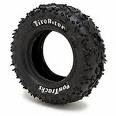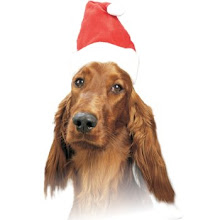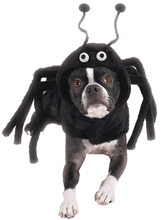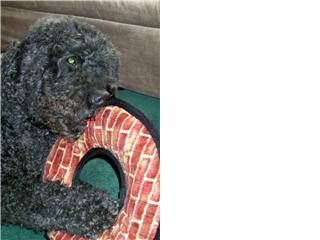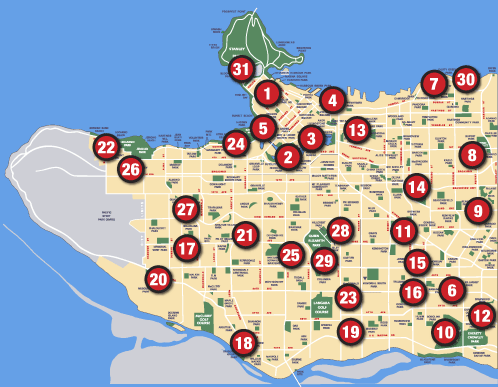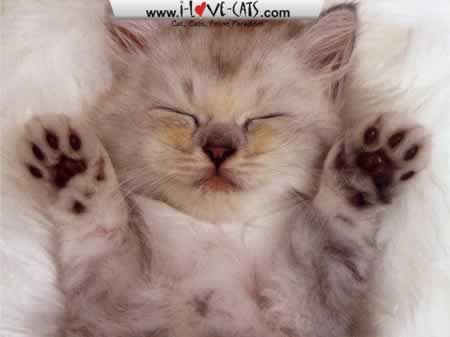How you feed your dog can have a significant impact on his overall health and his potential lifespan. Unfortunately, many standard and even premium dog foods have been found to be inadequate nutritionally and may contain harmful chemicals that can harm your dog. Not all of course but they are out there. reading the ingredient list sounds like a no-brainer and pretty easy for anybody. In addition, we're discovering that vegetables have powerful antioxidants that may help to reduce chronic disease and slow down the rate of aging. What about vegetables for dogs?
It seems likely that vegetables added to a dog's diet would have some of the same positive health benefits seen in humans, particularly since some of the studies showing the benefits of vegetables were carried out on dogs. In fact one of the world's longest living dogs named Bramble was raised in Great Britain on a vegan diet and is currently twenty-seven years old. Bramble's diet consists of a healthy bowl of rice, lentils, and a bowl of organic vegetables every evening.
Of course its only MY opinion but I still feel dogs...CANINES.. have insisors for a reason...to rip meat as well as other things...but thats MY opinion.
What are good vegetables for dogs and which should you avoid? Most vegetables, especially when cooked to improve digestibility, are safe for dogs to eat. The exceptions would be onions and garlic in any form. This is because these foods contain a chemical called thiosulphate which is known to be toxic to dogs. Dogs given this chemical develop hemolytic anemia., a condition where red blood cells circulating in the blood stream burst, reducing the oxygen carrying capacity of the blood. Onions are particularly dangerous vegetables for dogs as they contain higher quantities of this chemical. Having said that...a small amount of garlic powder in a biscuit recipe is perfectly acceptable as the chemical is changed with the heat. (a small amount...I said )
Vegetables that are good for dogs include green beans, cabbage, carrots, green beans, broccoli, squash, and most other green, leafy vegetables. Not only do these vegetables add healthy antioxidants to your dog's diet, they also are a significant source of soluble fiber and roughage which can promote intestinal health in your dog.
Fortunately, many dogs enjoy the taste of vegetables. Start by introducing small amounts of cooked vegetables to your dog's regular food, gradually increasing the quantity as your dog learns to accept them. A good rule of thumb is to have vegetables compose around 20% of your dog's daily food. If your dog is reluctant to eat cooked vegetables in his food, try pureeing them in a blender after cooking them and mixing them thoroughly with his regular diet. Vary your dog's antioxidant exposure, by adding different vegetables that are good for dogs every day to his food bowl.
It has been my experience that we have been limiting our dog's diet to almost one or two items that for the sake of conveniance have been screwing up their systems. Dogs cannot tolerate eating one type of food for a consistant time then changing to another type which is why most vets and people in the know say to slowly introduce food changes. can we not just iliminate this problem by having a really good all 'round diet that includes as many items as possible?? Seems sensible to me. It is so very interesting to me and noted in a previous blog that sooo many dogs are becoming allergic to foods. WHY??? The only common denominator after reviewing and casually interviewing several hundred dog owners is that there was a huge influx of wheat protein and/or a limited diet that the dog as a puppy or young dog was used to. This compounded with the same dog not having enough DUTY (More on that in a further blog) or excercise. Sounds like a problem for a rich dog huh.
It reminds me of Epstein Barr syndrome that everyone was coming down with in the 80s: a lethargy and lack of interest with accompanying muscle atrophy and depression...ummmmm thats called 'get off yer ass and DO something you lazy MOFO" disease in my household. and...our dogs are not far behind......BUT I digress.
Another advantage of vegetables for dogs is the role they play in controlling obesity. If your dog is overweight, reward him with some raw vegetable sticks such as celery or carrots in place of his regular cookies. To make the vegetables more appealing, add a small amount of peanut butter to give them additional flavor. Do this consistently in place of his higher calorie treats and you should see your dog's weight start to decline.
Vegetables for dogs can be a real asset to canine health. Plus, it adds variety to your dog's diet. Why not treat your dog to some vegetables?
Tuesday, February 26, 2008
Friday, February 22, 2008
AAhhh here comes the sun!!
Hey happy blog readers1
check out the new website that will be up and running in the next day or so at www.wooflesandmeowz.com. The blog will probably move over there.
check out the new website that will be up and running in the next day or so at www.wooflesandmeowz.com. The blog will probably move over there.
Friday, February 15, 2008
Grooming tips!
Good day fellow pet owners!
Every day in the store I get people asking me about cheap and cheerful ways to help groom either their dog or cat.
I always like to offer a few tips for those in need and the following are a few of my fav tips:
1. trimming nails for cats....don't bother. Either give them a good scratching post infused with some catnip or if necessary have it done professionally. A cat will likely scratch the hell out of you, the furniture and everything close to you during the trimming event...hit a quick and you are hooped!
2. trimming nails for dogs...use a really sharp and capable set of clippers and never the ones with a hole in a piece of metal with a shearing action type (they just pull too hard on the nail) Often a good pair of human toenail clippers work really well. Always soak the nails in a bit of water and/or oil to make them as translucent as possible. This way you can see the quick easier. If in doubt as to where the quick IS with a dog who has maybe all black nails.....trim sparingly and then use a file if the dog will let you. It only takes one nip of the quick and your dog will be loathe to let you do it ever again. Letting Fido run around on cement seems to keep nails down to a manageable length.
3. Teeth....giv'em as many chew sticks like Bully sticks as you see fit. The downside of a dog who does not chew (especially in small dogs) is a propensity to have tartar buildup and stinky breath. Using a doggy toothbrush with canine toothpaste helps alot too. Bone meal also really keeps the dentin clean. Don't be a fraid to give your dogs knuckle bones to chew and remove them as soon as they get either splintered or small enough to injest whole.
4. Coat grooming...unless you are really capable and/or fine with a simple cut. Get it done professionally. Some people are simply great at using a set of clippers like my friend Matt but most are not..still....you'll find out not unlike the time you were in 5th grade and your Mom decided to trim your bangs at a 36 degree angle...just before picture day. (I'm not too bitter about it ;-))
5. Paws...kepp 'e m rinsed off for the salt buildup and trim out the centre fur when traipsing around slushy areas.
6. Bathing your dog too often will only stress him/her out and ruin the coat. Only when necessary. Many times a good brushing will remove dirt and oil on non-water dogs and keep the pooch happy and good looking.
7. Brushing the dog everyday will keep hair and dander down to a minimum and provides a nice bonding moment for you and the animal. use the right brush for the right coat type though!
...so thats it...just a quick note for today.
cheers! and Woof!
Every day in the store I get people asking me about cheap and cheerful ways to help groom either their dog or cat.
I always like to offer a few tips for those in need and the following are a few of my fav tips:
1. trimming nails for cats....don't bother. Either give them a good scratching post infused with some catnip or if necessary have it done professionally. A cat will likely scratch the hell out of you, the furniture and everything close to you during the trimming event...hit a quick and you are hooped!
2. trimming nails for dogs...use a really sharp and capable set of clippers and never the ones with a hole in a piece of metal with a shearing action type (they just pull too hard on the nail) Often a good pair of human toenail clippers work really well. Always soak the nails in a bit of water and/or oil to make them as translucent as possible. This way you can see the quick easier. If in doubt as to where the quick IS with a dog who has maybe all black nails.....trim sparingly and then use a file if the dog will let you. It only takes one nip of the quick and your dog will be loathe to let you do it ever again. Letting Fido run around on cement seems to keep nails down to a manageable length.
3. Teeth....giv'em as many chew sticks like Bully sticks as you see fit. The downside of a dog who does not chew (especially in small dogs) is a propensity to have tartar buildup and stinky breath. Using a doggy toothbrush with canine toothpaste helps alot too. Bone meal also really keeps the dentin clean. Don't be a fraid to give your dogs knuckle bones to chew and remove them as soon as they get either splintered or small enough to injest whole.
4. Coat grooming...unless you are really capable and/or fine with a simple cut. Get it done professionally. Some people are simply great at using a set of clippers like my friend Matt but most are not..still....you'll find out not unlike the time you were in 5th grade and your Mom decided to trim your bangs at a 36 degree angle...just before picture day. (I'm not too bitter about it ;-))
5. Paws...kepp 'e m rinsed off for the salt buildup and trim out the centre fur when traipsing around slushy areas.
6. Bathing your dog too often will only stress him/her out and ruin the coat. Only when necessary. Many times a good brushing will remove dirt and oil on non-water dogs and keep the pooch happy and good looking.
7. Brushing the dog everyday will keep hair and dander down to a minimum and provides a nice bonding moment for you and the animal. use the right brush for the right coat type though!
...so thats it...just a quick note for today.
cheers! and Woof!
Wednesday, February 6, 2008
Brrrrr....Got Woof?
Oh let it snow, let it snow, let it snow.
Not unlike the tire service centres here in Vancouver that receive a rush of business when it snows, I get several people coming in with some poor sopping pooch that has a nice crust of snow on top looking for a wee bit of warmth. This is usually facilitated through a nice waterproof coat with some insulation on the underside.
Often people come into the store and if unfamiliar with modern pet products they will pick up a set of boots and just laugh at the idea.
I try not to take it personally but I do carefully explain that besides the obvious oddity of boots for a dog, they have merit in protection from "salt burn" to paws and compacted snow in the underpads that can be very painful for their dog. Most people will consider it and realize there was an assumption that was just surface and they learned something.
Sometimes if the people are diehard hikers or snowmobilers we offer them the option of one of our insulated sets of boots (for Fido) as it can protect and the pooch can run all day without sitting in the truck.
Now, I can be a great salesman but I have to say that if it is just for the esthetic of things I try to steer people away from getting boots if its just for the cute factor. Most people are pretty appreciative that we're not rabid sales people here.
While both a coat and boots can protect Fido from the elements it does take a good few minutes to get used to the boots. Coats are a snap usually and a welcome addition for the dog.
Boots take some getting used to...usually there is a stiff legged walk for about 5 minutes BUT going out in the snow a pooch will quickly see how much warmer it can be!
A while ago a lady wanted to buy a set for her dog that lives with her in Palm Springs.
I asked her "What the heck you need a set of boots for a dog in the desert for?" and she said "umm did you ever walk across blacktop asphalt in 100 degree heat"?
"Ok......gotcha... point taken..." I replied.."Cash or charge?"
She was cute and funny!
Never assume is the rule.....I'm learning all the time too.
Not unlike the tire service centres here in Vancouver that receive a rush of business when it snows, I get several people coming in with some poor sopping pooch that has a nice crust of snow on top looking for a wee bit of warmth. This is usually facilitated through a nice waterproof coat with some insulation on the underside.
Often people come into the store and if unfamiliar with modern pet products they will pick up a set of boots and just laugh at the idea.
I try not to take it personally but I do carefully explain that besides the obvious oddity of boots for a dog, they have merit in protection from "salt burn" to paws and compacted snow in the underpads that can be very painful for their dog. Most people will consider it and realize there was an assumption that was just surface and they learned something.
Sometimes if the people are diehard hikers or snowmobilers we offer them the option of one of our insulated sets of boots (for Fido) as it can protect and the pooch can run all day without sitting in the truck.
Now, I can be a great salesman but I have to say that if it is just for the esthetic of things I try to steer people away from getting boots if its just for the cute factor. Most people are pretty appreciative that we're not rabid sales people here.
While both a coat and boots can protect Fido from the elements it does take a good few minutes to get used to the boots. Coats are a snap usually and a welcome addition for the dog.
Boots take some getting used to...usually there is a stiff legged walk for about 5 minutes BUT going out in the snow a pooch will quickly see how much warmer it can be!
A while ago a lady wanted to buy a set for her dog that lives with her in Palm Springs.
I asked her "What the heck you need a set of boots for a dog in the desert for?" and she said "umm did you ever walk across blacktop asphalt in 100 degree heat"?
"Ok......gotcha... point taken..." I replied.."Cash or charge?"
She was cute and funny!
Never assume is the rule.....I'm learning all the time too.
Monday, February 4, 2008
Woofles and Meowz on Granville Island
Being on Granville Island is the absolute best!
We get the most interesting people from all over the world and usually there is a common denominator of a pet involved.
I always love to ask where people are from and what kind of dog or cat they have. Many people have breeds of dogs that I have never seen and I have seen quite a few rare and unusual breeds.
People usually like to talk about their pets much more than themselves (I know interesting huh!) and are quite forthcoming about likes and dislikes of their furry friends. I learn so much about the type of pets people have and what traits are common or uncommon.
There are very specific ownership styles with regard to geographical differences.
People in the United Kingdom treat their dogs much more as family or farm/ranch type pets and usually have larger breeds.
The Labrador Retreiver is hugely popular over the pond and Australians love their herding dogs for obvious reasons.
Often a pet is owned by the family entirely whereas here often a pet is singularily one persons property and that is made clear to the rest of the people in the family.
I know that many visitors find it amusing how we treat some of our smaller breeds like family members rather than pets...and thats ok too.
Often men like larger breeds while women like smaller breeds but not always! The Jack Russel Terrier seems to be a small type breed that responds to men more favourably than to women (no this is not a stereotype..or maybe it is but it seems to be true....kinda like how gay men make great florists or hairdressers..which is it..a stereotype AND true??) The JRT definitely does well with strong leadership from the owner whether that comes from a woman or man makes no difference. A dog will always respond quickest to the dominating force..that just usually happens to be us big mouthed guys. The trick is to keep that type of dog BUSY! but I digress.
Our friends from the south have seen fit to follow the trend of "purse dogs" (think Paris and Britney) so they have different needs when visiting. Often they like the funkier clothes and toys. Booties anyone?
Here we like to keep 'em dry with a good raincoat or something warm for the short haired breeds.
Hopefully we provide a good range of merchandise to cover all bases and needs while getting the scoop on who owns what and where.
They said all roads lead to Rome but I say all people are eventually led to Granville Island....see you there!
We get the most interesting people from all over the world and usually there is a common denominator of a pet involved.
I always love to ask where people are from and what kind of dog or cat they have. Many people have breeds of dogs that I have never seen and I have seen quite a few rare and unusual breeds.
People usually like to talk about their pets much more than themselves (I know interesting huh!) and are quite forthcoming about likes and dislikes of their furry friends. I learn so much about the type of pets people have and what traits are common or uncommon.
There are very specific ownership styles with regard to geographical differences.
People in the United Kingdom treat their dogs much more as family or farm/ranch type pets and usually have larger breeds.
The Labrador Retreiver is hugely popular over the pond and Australians love their herding dogs for obvious reasons.
Often a pet is owned by the family entirely whereas here often a pet is singularily one persons property and that is made clear to the rest of the people in the family.
I know that many visitors find it amusing how we treat some of our smaller breeds like family members rather than pets...and thats ok too.
Often men like larger breeds while women like smaller breeds but not always! The Jack Russel Terrier seems to be a small type breed that responds to men more favourably than to women (no this is not a stereotype..or maybe it is but it seems to be true....kinda like how gay men make great florists or hairdressers..which is it..a stereotype AND true??) The JRT definitely does well with strong leadership from the owner whether that comes from a woman or man makes no difference. A dog will always respond quickest to the dominating force..that just usually happens to be us big mouthed guys. The trick is to keep that type of dog BUSY! but I digress.
Our friends from the south have seen fit to follow the trend of "purse dogs" (think Paris and Britney) so they have different needs when visiting. Often they like the funkier clothes and toys. Booties anyone?
Here we like to keep 'em dry with a good raincoat or something warm for the short haired breeds.
Hopefully we provide a good range of merchandise to cover all bases and needs while getting the scoop on who owns what and where.
They said all roads lead to Rome but I say all people are eventually led to Granville Island....see you there!
Sunday, February 3, 2008
Hurray for the SPCA and Anna Sewell
I was thinking recently after being asked what my favorite book was and why. I came to the conclusion that it is, and was, one of the first novels that I ever read yet remember so vividly. The title was in my editon "Black Beauty" by Anna Sewell and while alot of books and movies have come and gone I think this one has touched me far greater than any. Not only was it wonderful escapeism but it led to a greater understanding and need of sentimental treatment for animals and what that really means. Not just simple nurturing but safety, discipline, shelter, good food AND nurturing. Of course all the others really are a form of nurturing in the end anyways aren't they?
Here's an interesting factoid:
In 1809 Lord Erskine (hurray for the Scots) first introduced a bill in the British Parliament to prevent cruelty to animals. Two years later, in 1824, came the world's first animal welfare society--the Society for the Prevention of Cruelty to Animals (SPCA). In 1866 Henry Bergh founded the ASPCA (American Society for the Prevention of Cruelty to Animals) in New York city.
The following snippet I came across on a site called believermag.com and were I not reading the ink myself I would think I may have wrote it for the most part indeed.
*
Anna Sewell was not exactly someone you’d want to sign up for a three-book deal. In 1871 she was already fifty-one years old, a first-time novelist, and she’d never shown any particular inclination for writing before. Lame since childhood, her increasing frailty had turned her into a shut-in; eight months before her hopeful diary entry, a doctor had predicted that Sewell had eighteen months left to live. To begin a book while halfway to her deathbed might have looked pointless indeed, especially when, as Margaret Sewell later recalled, “My aunt could never read or write for more than a short time at a sitting.” Sometimes weakness would so overcome her that days or weeks of enforced rest followed.
And yet her “life of a horse” was not such a strange goal. Her mother Mary was an established Quaker author of children’s verse and fiction, and horses happened to be a subject close to Anna Sewell’s heart; her disability left her dependent on them for getting about. Family members had noticed her intuitive knowledge of how to handle them, as well as her penchant for speaking gently to them as they rode. Having lived unmarried with her mother for her entire life, Anna also had the veritable room of her own, on the second floor of their home at 125 Spixworth Road.
There she convalesced, stared out over the fields, and would sometimes make it across the room to her desk. Writing progressed with agonizing slowness between long bedridden stretches. Her eighteen months came and went. She was still alive, though so close to death that she stopped bothering with doctor’s visits altogether: there was no point. But she lived another eighteen months, and another eighteen, and another still. In August 1877 she made one of the final notes in her diary: My proofs of Black Beauty are come—very nice type.
The completed story recounts the life and times of the well-bred horse of the title, and such stable companions as gentle Merrylegs and the angry and spirited Ginger; echoing throughout the book is the memory of Black Beauty’s mother Duchess, with her admonitions to stay gentle and mannered at all times. Surrounding these horses is a procession of good, bad, and indifferent owners: the well-meaning but inept rookie Joe Green, the drunkard Reuben Smith, the callous and cruel cabdriver Nicholas Skinner. Sewell sold this story, and all its rights, to the publishing house Jarrold & Sons for the staggeringly cheap advance of £20. But she was wise to get her cash up front.
The book was published in November: Anna was dead in April.
*
Black Beauty: His Grooms and Companions; The Autobiography of a Horse, Translated from the Original Equine by Anna Sewell is the most overlooked book in the entire canon of English literature: it is the 800-pound horse in our living room. Why, you’d think the smell alone would make us take notice. Black Beauty is one of the best selling books ever published; a century after its publication, Sewell’s dying work was estimated to have sold approximately thirty million copies. Several decades since have surely added many millions more to that total. Black Beauty has been translated into everything from Swedish to Hindustani, and made and remade many times over in both silent and sound movies, as well as a TV series. It has also generated sheaves of sequels—including Son of Black Beauty, which sounds like a swell idea for a book until you recall that Black Beauty was a gelding. No matter: he is an unstoppable force. Nearly everyone has heard of him, many have read him, and few have any notion whatsoever of his origins.
I cannot find a single academic monograph dedicated to examining Black Beauty. The book’s critical obscurity is matched by that of Anna Sewell herself; the only full-length biography devoted to her, The Woman Who Wrote Black Beauty, has been out of print for thirty years, and was more about mother Mary Sewell than about Anna herself. As biographer Susan Chitty readily admitted, Anna was almost impervious to biography: her one surviving diary is a tatty notebook of fourteen pages in length. Compare this to Sewell’s rival in the shut-in spinster-genius sweepstakes, Emily Dickinson: she, at least, left hundreds of letters behind. Of Anna Sewell we have little but what comes, so to speak, straight from the horse’s mouth.
But oh, how he spoke!
I read Black Beauty dozens of times as child. Whenever I was laid up with the flu, out of school on a snow day, or simply wanted to shut out the world for a while, this was the book I’d turn to. I had no idea, when miserably feverish, that I was reading it the way it had been written—in a sickbed. But I would not have dwelt long on this, even had I known: I set aside Black Beauty when I was twelve or so, as the approach of junior high school forced me out of childish things and, in their stead, into foolish things.
It was over a decade before I picked it up again, during a four-month purgatorial stretch of unemployment after finishing college; stuck in my old teenage attic bedroom, I stayed up until four or five a.m. every night reading through my childhood bookshelf. It was still dusty and untouched from the day I’d left for college, and composed solely of those books I had seen unfit to take with me, the castoffs spurned from my new adult existence. Eventually I made my way across the bottom shelf to the old copy of Black Beauty, still pristine in its slipcase, and I read it once again.
It was just as I remembered, even down to the smooth plate illustration of the young colt nursing at his mother’s side. But as I read the book, a curiously different sense of familiarity crept over me: and then, sheer disbelief. I rummaged my college copy of the Norton Anthology out of a duffel bag, flipped about halfway into it, and read it; then I looked back at Sewell’s tale incredulously. Her work, which I had absorbed unblinkingly as a child, looked utterly different now: for the first time I could see what she’d done. She had taken an American slave narrative and replaced the slaves with horses.
*
Now, why would anyone do that? Necessity, for one thing. A first-time writer on her deathbed, Sewell gravitated to a form she was already deeply familiar with. As a Quaker with relatives active in both abolitionism and antivivisectionism, she’d grown up in a sect that had published slave narratives throughout the nineteenth century. And it starts to make sense when one considers how similar their plights are, for horses and slaves are both thinking and feeling beings turned into things: they are bought and sold by a series of masters; they are beaten; their families are scattered; their labor is taken from them. All along, neither can say a word.
In case you missed the titular metaphor, Black Beauty himself is also called “Darkie” or “Blackie” by his masters—a detail not lost upon the apartheid-era government of South Africa, which banned the book as a seditious text. The narrative arc follows that of thousands of other slave writers: a hazy memory of a brief but naïve childhood when he is still too young to be put to work; then, once his body is valuable enough, the breakup of his family as he is sold to a new owner; the occasional relatively happy day or kindhearted owner; and then a succession of owners who abuse him, steal his feed, and house him in miserable quarters. He makes friends among his fellow horses, but cannot count on any of them to stay near for long, as they die or are sold down the river—the River Thames, granted, but it might as well be the Mississippi.
The primal scene of enslavement comes early, after Black Beauty witnesses a hunt in a nearby field that has gone awry. A horse falls down, killing its rider:
Mr. Bond, the farrier, came to look at the black horse that lay groaning on the grass, he felt him all over, and shook his head; one of his legs was broken. Then someone ran to our master’s house and came back with a gun; presently there was a loud bang and a dreadful shriek, and then all was still; the black horse moved no more. My mother seemed much troubled; she said she had known that horse for years, and that his name was “Rob Roy”; he was a good bold horse, and there was no vice in him. She would never go to that part of the field afterwards.
Later Black Beauty discovers that he has unwittingly witnessed the death of his own brother. It is an appallingly understated realization. Not only has his mother shielded Black Beauty from grieving for this sibling—“We are only horses, and don’t know,” she says meekly as she watches Rob Roy die—but more subtly, we understand that she had never even told him that he had a brother in the first place.
“It seems that horses have no relations,” Black Beauty ponders, “at least, they never know each other after they are sold.”
Not long after Rob Roy’s death, the strapping young narrator is sold for £150; at the end of the book, he narrowly avoids the glue works by being sold for a fiver.
In the intervening pages, Black Beauty has been broken upon the carriage wheel of Victorian London: knees destroyed by drunken and inept riders, lungs pocked by filthy stables, windpipe half-broken by fashionable “bearing-reins,” and his body weakened by cheap feed. By the penultimate chapter, he is given up for dead in a street on Ludgate Hill. That the book then manages a happy ending of sorts is not saying much: every fellow horse that our protagonist has ever known is dead or gone. Black Beauty is quite possibly the most relentless tale of degradation ever entrusted to the embrace of little children. And yet it is also one of the most beloved.
*
There are at least twenty editions of Black Beauty currently in print. There have been paperbacks and hardcovers, illustrated editions and Braille editions, Black Beauty coloring and pop-up books, and a gleefully malicious Spike Milligan spoof featuring a protagonist with “a lovely body with a huge cock.” There is a Black Beauty quilt pattern. You can also, if you like, listen to Black Beauty on CD, cassette, or as an online audio download.
None of this was exactly what Anna Sewell had in mind. When it was first published, Black Beauty was sold as a fictionalized instruction manual. Still assuming her role as a translator “from the original Equine,” at the end of the book, Sewell includes a note to stable hands: “The Translator would recommend to them to procure an admirable little book, price fourpence, titled The Horse Book.” Sewell was primarily writing for teenagers and adults; more to the point, she was writing for stable hands and cabmen. Like their modern automotive counterparts careening up Sixth Avenue, cabbies were notorious for the rough usage of horses. Sewell explained not long before she died:
I have for six years been confined to the house and to my sofa, and have from time to time, as I was able, been writing what I think will turn out a little book, its special aim being to induce kindness, sympathy and an understanding treatment of horses. In thinking of Cab-horses, I have been led to think of Cabmen, and I am anxious, if I can, to present their true conditions, and their great difficulties, in a correct and telling manner.
The book crossed over to children through both luck and design. Sewell’s unadorned Quaker aesthetics, along with very short chapters—which may well have been necessitated by an inability to write for long at one sitting—combined to make a book that was both compelling and easy to read. Sewell was not unaware of this; an edition to be distributed in Sunday Schools was already in the works when she died, and her publisher advertised it as part of a line of moralizing and temperance tales for children.
The early days were not promising, though. Initial orders of Black Beauty by London booksellers totaled all of 100 copies, and for its first decade it received little attention. But it had the potential to turn into something bigger—much bigger. It tapped directly into the outrage and compassion underlying the beginnings of the animal-rights movement; shortly after its publication, one magazine mused that “if the Society for the Prevention of Cruelty to Animals had published the Autobiography of Black Beauty we should have said it had published its best work.”
Unlike most book reviews, this one actually proved to be prophetic. In February 1890, days after receiving a copy of the book from a friend, the American SPCA activist George Angell began raising money to initiate a massive print run; as the editor of the SPCA magazine Our Dumb Animals, he posted this italicized call to action:
I want to print immediately a hundred thousand copies. I want the power to give away thousands of these to drivers of horses. I want to send a copy postpaid to the editors of about thirteen thousand American newspapers and magazines.
Incredibly, this is exactly what he did. Within months the entire printing was given away. Others enthusiastically took up the reins: publishers began selling it, magazines gave it away as a premium, and the Frank Miller Harness Dressing Company put in a bulk order for fifteen tons of customized copies: any blank spaces in the chapters were filled with pictures of horses proudly wearing saddle blankets bearing the company’s name.
By the end of the year, 217,000 copies of Black Beauty had been sold, and sales only accelerated from there. The book now caught fire in its homeland as well, and soon copies sold in Britain were stamped with the endorsement Recommended by the R.S.P.C.A. There was something else new in the book, too. Amid the publishing uproar, Angell had quietly inserted a new subtitle into the Black Beauty title page:
The Uncle Tom’s Cabin of Horses.
Now doesn't that just make you go "hmmmmmm"???
If ever in a second hand bookstore take the opportunity to pick up a copy of Miss Sewell's work...hopefully a dusty well used copy.
An interesting headscratching turn of events happened to me about this particular book too.
I had a copy that I had purchaced at what we called the "snackbar" library on CFB base Greisbach in Edmonton. I had previously read this copy as a loaner from the library and when they were clearing out some stock it went on the sale table. I bought it and read it again, at about the age of 8 or 9. The book went astray after that but not before I had put my name just inside the cover. Move forward a dozen years or so and I am at a "fleamarket" sale in a mall I worked in and there was a copy of the same book so I bought it. It wassn't until I got back to my store that a staff member said I had terrible handwriting and when asked why she showed me that my signature on the inside of the book proved so. It was then that I told her trying to blink back a tear that I had signed the inside copy of the book a long time ago and it was meant to be mine again.
Now that was a thing to make ME go hmmmmmm.
Here's an interesting factoid:
In 1809 Lord Erskine (hurray for the Scots) first introduced a bill in the British Parliament to prevent cruelty to animals. Two years later, in 1824, came the world's first animal welfare society--the Society for the Prevention of Cruelty to Animals (SPCA). In 1866 Henry Bergh founded the ASPCA (American Society for the Prevention of Cruelty to Animals) in New York city.
The following snippet I came across on a site called believermag.com and were I not reading the ink myself I would think I may have wrote it for the most part indeed.
*
Anna Sewell was not exactly someone you’d want to sign up for a three-book deal. In 1871 she was already fifty-one years old, a first-time novelist, and she’d never shown any particular inclination for writing before. Lame since childhood, her increasing frailty had turned her into a shut-in; eight months before her hopeful diary entry, a doctor had predicted that Sewell had eighteen months left to live. To begin a book while halfway to her deathbed might have looked pointless indeed, especially when, as Margaret Sewell later recalled, “My aunt could never read or write for more than a short time at a sitting.” Sometimes weakness would so overcome her that days or weeks of enforced rest followed.
And yet her “life of a horse” was not such a strange goal. Her mother Mary was an established Quaker author of children’s verse and fiction, and horses happened to be a subject close to Anna Sewell’s heart; her disability left her dependent on them for getting about. Family members had noticed her intuitive knowledge of how to handle them, as well as her penchant for speaking gently to them as they rode. Having lived unmarried with her mother for her entire life, Anna also had the veritable room of her own, on the second floor of their home at 125 Spixworth Road.
There she convalesced, stared out over the fields, and would sometimes make it across the room to her desk. Writing progressed with agonizing slowness between long bedridden stretches. Her eighteen months came and went. She was still alive, though so close to death that she stopped bothering with doctor’s visits altogether: there was no point. But she lived another eighteen months, and another eighteen, and another still. In August 1877 she made one of the final notes in her diary: My proofs of Black Beauty are come—very nice type.
The completed story recounts the life and times of the well-bred horse of the title, and such stable companions as gentle Merrylegs and the angry and spirited Ginger; echoing throughout the book is the memory of Black Beauty’s mother Duchess, with her admonitions to stay gentle and mannered at all times. Surrounding these horses is a procession of good, bad, and indifferent owners: the well-meaning but inept rookie Joe Green, the drunkard Reuben Smith, the callous and cruel cabdriver Nicholas Skinner. Sewell sold this story, and all its rights, to the publishing house Jarrold & Sons for the staggeringly cheap advance of £20. But she was wise to get her cash up front.
The book was published in November: Anna was dead in April.
*
Black Beauty: His Grooms and Companions; The Autobiography of a Horse, Translated from the Original Equine by Anna Sewell is the most overlooked book in the entire canon of English literature: it is the 800-pound horse in our living room. Why, you’d think the smell alone would make us take notice. Black Beauty is one of the best selling books ever published; a century after its publication, Sewell’s dying work was estimated to have sold approximately thirty million copies. Several decades since have surely added many millions more to that total. Black Beauty has been translated into everything from Swedish to Hindustani, and made and remade many times over in both silent and sound movies, as well as a TV series. It has also generated sheaves of sequels—including Son of Black Beauty, which sounds like a swell idea for a book until you recall that Black Beauty was a gelding. No matter: he is an unstoppable force. Nearly everyone has heard of him, many have read him, and few have any notion whatsoever of his origins.
I cannot find a single academic monograph dedicated to examining Black Beauty. The book’s critical obscurity is matched by that of Anna Sewell herself; the only full-length biography devoted to her, The Woman Who Wrote Black Beauty, has been out of print for thirty years, and was more about mother Mary Sewell than about Anna herself. As biographer Susan Chitty readily admitted, Anna was almost impervious to biography: her one surviving diary is a tatty notebook of fourteen pages in length. Compare this to Sewell’s rival in the shut-in spinster-genius sweepstakes, Emily Dickinson: she, at least, left hundreds of letters behind. Of Anna Sewell we have little but what comes, so to speak, straight from the horse’s mouth.
But oh, how he spoke!
I read Black Beauty dozens of times as child. Whenever I was laid up with the flu, out of school on a snow day, or simply wanted to shut out the world for a while, this was the book I’d turn to. I had no idea, when miserably feverish, that I was reading it the way it had been written—in a sickbed. But I would not have dwelt long on this, even had I known: I set aside Black Beauty when I was twelve or so, as the approach of junior high school forced me out of childish things and, in their stead, into foolish things.
It was over a decade before I picked it up again, during a four-month purgatorial stretch of unemployment after finishing college; stuck in my old teenage attic bedroom, I stayed up until four or five a.m. every night reading through my childhood bookshelf. It was still dusty and untouched from the day I’d left for college, and composed solely of those books I had seen unfit to take with me, the castoffs spurned from my new adult existence. Eventually I made my way across the bottom shelf to the old copy of Black Beauty, still pristine in its slipcase, and I read it once again.
It was just as I remembered, even down to the smooth plate illustration of the young colt nursing at his mother’s side. But as I read the book, a curiously different sense of familiarity crept over me: and then, sheer disbelief. I rummaged my college copy of the Norton Anthology out of a duffel bag, flipped about halfway into it, and read it; then I looked back at Sewell’s tale incredulously. Her work, which I had absorbed unblinkingly as a child, looked utterly different now: for the first time I could see what she’d done. She had taken an American slave narrative and replaced the slaves with horses.
*
Now, why would anyone do that? Necessity, for one thing. A first-time writer on her deathbed, Sewell gravitated to a form she was already deeply familiar with. As a Quaker with relatives active in both abolitionism and antivivisectionism, she’d grown up in a sect that had published slave narratives throughout the nineteenth century. And it starts to make sense when one considers how similar their plights are, for horses and slaves are both thinking and feeling beings turned into things: they are bought and sold by a series of masters; they are beaten; their families are scattered; their labor is taken from them. All along, neither can say a word.
In case you missed the titular metaphor, Black Beauty himself is also called “Darkie” or “Blackie” by his masters—a detail not lost upon the apartheid-era government of South Africa, which banned the book as a seditious text. The narrative arc follows that of thousands of other slave writers: a hazy memory of a brief but naïve childhood when he is still too young to be put to work; then, once his body is valuable enough, the breakup of his family as he is sold to a new owner; the occasional relatively happy day or kindhearted owner; and then a succession of owners who abuse him, steal his feed, and house him in miserable quarters. He makes friends among his fellow horses, but cannot count on any of them to stay near for long, as they die or are sold down the river—the River Thames, granted, but it might as well be the Mississippi.
The primal scene of enslavement comes early, after Black Beauty witnesses a hunt in a nearby field that has gone awry. A horse falls down, killing its rider:
Mr. Bond, the farrier, came to look at the black horse that lay groaning on the grass, he felt him all over, and shook his head; one of his legs was broken. Then someone ran to our master’s house and came back with a gun; presently there was a loud bang and a dreadful shriek, and then all was still; the black horse moved no more. My mother seemed much troubled; she said she had known that horse for years, and that his name was “Rob Roy”; he was a good bold horse, and there was no vice in him. She would never go to that part of the field afterwards.
Later Black Beauty discovers that he has unwittingly witnessed the death of his own brother. It is an appallingly understated realization. Not only has his mother shielded Black Beauty from grieving for this sibling—“We are only horses, and don’t know,” she says meekly as she watches Rob Roy die—but more subtly, we understand that she had never even told him that he had a brother in the first place.
“It seems that horses have no relations,” Black Beauty ponders, “at least, they never know each other after they are sold.”
Not long after Rob Roy’s death, the strapping young narrator is sold for £150; at the end of the book, he narrowly avoids the glue works by being sold for a fiver.
In the intervening pages, Black Beauty has been broken upon the carriage wheel of Victorian London: knees destroyed by drunken and inept riders, lungs pocked by filthy stables, windpipe half-broken by fashionable “bearing-reins,” and his body weakened by cheap feed. By the penultimate chapter, he is given up for dead in a street on Ludgate Hill. That the book then manages a happy ending of sorts is not saying much: every fellow horse that our protagonist has ever known is dead or gone. Black Beauty is quite possibly the most relentless tale of degradation ever entrusted to the embrace of little children. And yet it is also one of the most beloved.
*
There are at least twenty editions of Black Beauty currently in print. There have been paperbacks and hardcovers, illustrated editions and Braille editions, Black Beauty coloring and pop-up books, and a gleefully malicious Spike Milligan spoof featuring a protagonist with “a lovely body with a huge cock.” There is a Black Beauty quilt pattern. You can also, if you like, listen to Black Beauty on CD, cassette, or as an online audio download.
None of this was exactly what Anna Sewell had in mind. When it was first published, Black Beauty was sold as a fictionalized instruction manual. Still assuming her role as a translator “from the original Equine,” at the end of the book, Sewell includes a note to stable hands: “The Translator would recommend to them to procure an admirable little book, price fourpence, titled The Horse Book.” Sewell was primarily writing for teenagers and adults; more to the point, she was writing for stable hands and cabmen. Like their modern automotive counterparts careening up Sixth Avenue, cabbies were notorious for the rough usage of horses. Sewell explained not long before she died:
I have for six years been confined to the house and to my sofa, and have from time to time, as I was able, been writing what I think will turn out a little book, its special aim being to induce kindness, sympathy and an understanding treatment of horses. In thinking of Cab-horses, I have been led to think of Cabmen, and I am anxious, if I can, to present their true conditions, and their great difficulties, in a correct and telling manner.
The book crossed over to children through both luck and design. Sewell’s unadorned Quaker aesthetics, along with very short chapters—which may well have been necessitated by an inability to write for long at one sitting—combined to make a book that was both compelling and easy to read. Sewell was not unaware of this; an edition to be distributed in Sunday Schools was already in the works when she died, and her publisher advertised it as part of a line of moralizing and temperance tales for children.
The early days were not promising, though. Initial orders of Black Beauty by London booksellers totaled all of 100 copies, and for its first decade it received little attention. But it had the potential to turn into something bigger—much bigger. It tapped directly into the outrage and compassion underlying the beginnings of the animal-rights movement; shortly after its publication, one magazine mused that “if the Society for the Prevention of Cruelty to Animals had published the Autobiography of Black Beauty we should have said it had published its best work.”
Unlike most book reviews, this one actually proved to be prophetic. In February 1890, days after receiving a copy of the book from a friend, the American SPCA activist George Angell began raising money to initiate a massive print run; as the editor of the SPCA magazine Our Dumb Animals, he posted this italicized call to action:
I want to print immediately a hundred thousand copies. I want the power to give away thousands of these to drivers of horses. I want to send a copy postpaid to the editors of about thirteen thousand American newspapers and magazines.
Incredibly, this is exactly what he did. Within months the entire printing was given away. Others enthusiastically took up the reins: publishers began selling it, magazines gave it away as a premium, and the Frank Miller Harness Dressing Company put in a bulk order for fifteen tons of customized copies: any blank spaces in the chapters were filled with pictures of horses proudly wearing saddle blankets bearing the company’s name.
By the end of the year, 217,000 copies of Black Beauty had been sold, and sales only accelerated from there. The book now caught fire in its homeland as well, and soon copies sold in Britain were stamped with the endorsement Recommended by the R.S.P.C.A. There was something else new in the book, too. Amid the publishing uproar, Angell had quietly inserted a new subtitle into the Black Beauty title page:
The Uncle Tom’s Cabin of Horses.
Now doesn't that just make you go "hmmmmmm"???
If ever in a second hand bookstore take the opportunity to pick up a copy of Miss Sewell's work...hopefully a dusty well used copy.
An interesting headscratching turn of events happened to me about this particular book too.
I had a copy that I had purchaced at what we called the "snackbar" library on CFB base Greisbach in Edmonton. I had previously read this copy as a loaner from the library and when they were clearing out some stock it went on the sale table. I bought it and read it again, at about the age of 8 or 9. The book went astray after that but not before I had put my name just inside the cover. Move forward a dozen years or so and I am at a "fleamarket" sale in a mall I worked in and there was a copy of the same book so I bought it. It wassn't until I got back to my store that a staff member said I had terrible handwriting and when asked why she showed me that my signature on the inside of the book proved so. It was then that I told her trying to blink back a tear that I had signed the inside copy of the book a long time ago and it was meant to be mine again.
Now that was a thing to make ME go hmmmmmm.
Saturday, February 2, 2008
Dogs in stores.
With more and more people bringing the smaller breed dogs around with them it is increasingly alarming to see how many people think it is ok to simply bring their pets into retail establishments.
Now, I have to say that I LOVE it when a pet brings his owner into my store and vise versa. I love to see who and what kinda dogs own which kinda owner...but thats because I have a PET STORE. Meeting people with their dogs while they are on a wee jaunt is fun for us and its always a great idea if in wanting a certain outdoor item to bring Fido or Fifi into the store to try it on...and there's ALWAYS a snack offered our four footed friends.
Having said that I have to say that almost (almost) all other retailers that I deal with say they either DO NOT allow dogs into their stores unless it is a service dog that is in training and has the service vest on at that time or one that is working for a person in need of assistance such as a seeing eye dog.
It is odd enough to see a dog in say, Home Depot where there is a vast majority of work related materials and cement floors but to see dogs in fashionable retail stores is awkward for the store manager/owner and usually annoying for other shoppers.
Watching a shitzu pee on a leg of a gorgeous couch in a furniture store in North Van just before Christmas (and the owner both saw it and ignored it) was enough to make me shake my head in disbelief! That couch is now unsellable and has to be returned at great expense to the store and time to the employees simply because the owner HAD to bring her dog shopping with her.
Bringing pets into food establishments or stores that sell food items is also, well, rude and very unthinking of the pet owner. Allergies and food safety aside some people are simply not comfortable with other peoples dogs and I for one, and as a dog person myself..truly GET that.
Instead, leave your dog at home or in doggie daycare....do NOT bring your dog to a store and tie the poor pooch up outside for any length of time.
I can't tell you how many times in front of the KIDS MARKET on Granville Island some uncaring owner will leave the dog tied up at the door only to have the dog go ballistic with howls and barks for the entire time the owner is in the store. This is really unfair to the animal and stresses out both the dog and people working and shopping around the near area.
Outside Urban Fare in Yaletown is another place people like to bring dogs to bark while tied up outside.
Lets be smart about this people...the dog obviously hates to be left tied up and "oh he'll calm down" coming from the owner just doesn't cut it. Its downright rude...and he doesn't hear it while shopping but everyone else trying to sleep or enjoy a cup of coffee does.
I guess it all comes down to being a "good citizen" for you, your dog, and the people around you. Remenber "Good Citizenship" lessons in school? I do although I went to Military schools.
Interestingly, most people seem to agree with the idea that dogs in stores and barking, frantic dogs tied up outside are bad ideas.
It really only takes a small few people to spoil it for the rest of the consciencious people who, for the most part, do a GREAT job of dog ownership here in Vancouver.
Its just a trend that we can nip in the bud right now!
I shall now fold up my portable soapbox until the next rant or rave.
P.S this topic propegated by my friend Colin who suffers more than his fair share of Urban Fare dog spazzes.
Now, I have to say that I LOVE it when a pet brings his owner into my store and vise versa. I love to see who and what kinda dogs own which kinda owner...but thats because I have a PET STORE. Meeting people with their dogs while they are on a wee jaunt is fun for us and its always a great idea if in wanting a certain outdoor item to bring Fido or Fifi into the store to try it on...and there's ALWAYS a snack offered our four footed friends.
Having said that I have to say that almost (almost) all other retailers that I deal with say they either DO NOT allow dogs into their stores unless it is a service dog that is in training and has the service vest on at that time or one that is working for a person in need of assistance such as a seeing eye dog.
It is odd enough to see a dog in say, Home Depot where there is a vast majority of work related materials and cement floors but to see dogs in fashionable retail stores is awkward for the store manager/owner and usually annoying for other shoppers.
Watching a shitzu pee on a leg of a gorgeous couch in a furniture store in North Van just before Christmas (and the owner both saw it and ignored it) was enough to make me shake my head in disbelief! That couch is now unsellable and has to be returned at great expense to the store and time to the employees simply because the owner HAD to bring her dog shopping with her.
Bringing pets into food establishments or stores that sell food items is also, well, rude and very unthinking of the pet owner. Allergies and food safety aside some people are simply not comfortable with other peoples dogs and I for one, and as a dog person myself..truly GET that.
Instead, leave your dog at home or in doggie daycare....do NOT bring your dog to a store and tie the poor pooch up outside for any length of time.
I can't tell you how many times in front of the KIDS MARKET on Granville Island some uncaring owner will leave the dog tied up at the door only to have the dog go ballistic with howls and barks for the entire time the owner is in the store. This is really unfair to the animal and stresses out both the dog and people working and shopping around the near area.
Outside Urban Fare in Yaletown is another place people like to bring dogs to bark while tied up outside.
Lets be smart about this people...the dog obviously hates to be left tied up and "oh he'll calm down" coming from the owner just doesn't cut it. Its downright rude...and he doesn't hear it while shopping but everyone else trying to sleep or enjoy a cup of coffee does.
I guess it all comes down to being a "good citizen" for you, your dog, and the people around you. Remenber "Good Citizenship" lessons in school? I do although I went to Military schools.
Interestingly, most people seem to agree with the idea that dogs in stores and barking, frantic dogs tied up outside are bad ideas.
It really only takes a small few people to spoil it for the rest of the consciencious people who, for the most part, do a GREAT job of dog ownership here in Vancouver.
Its just a trend that we can nip in the bud right now!
I shall now fold up my portable soapbox until the next rant or rave.
P.S this topic propegated by my friend Colin who suffers more than his fair share of Urban Fare dog spazzes.
Subscribe to:
Posts (Atom)
